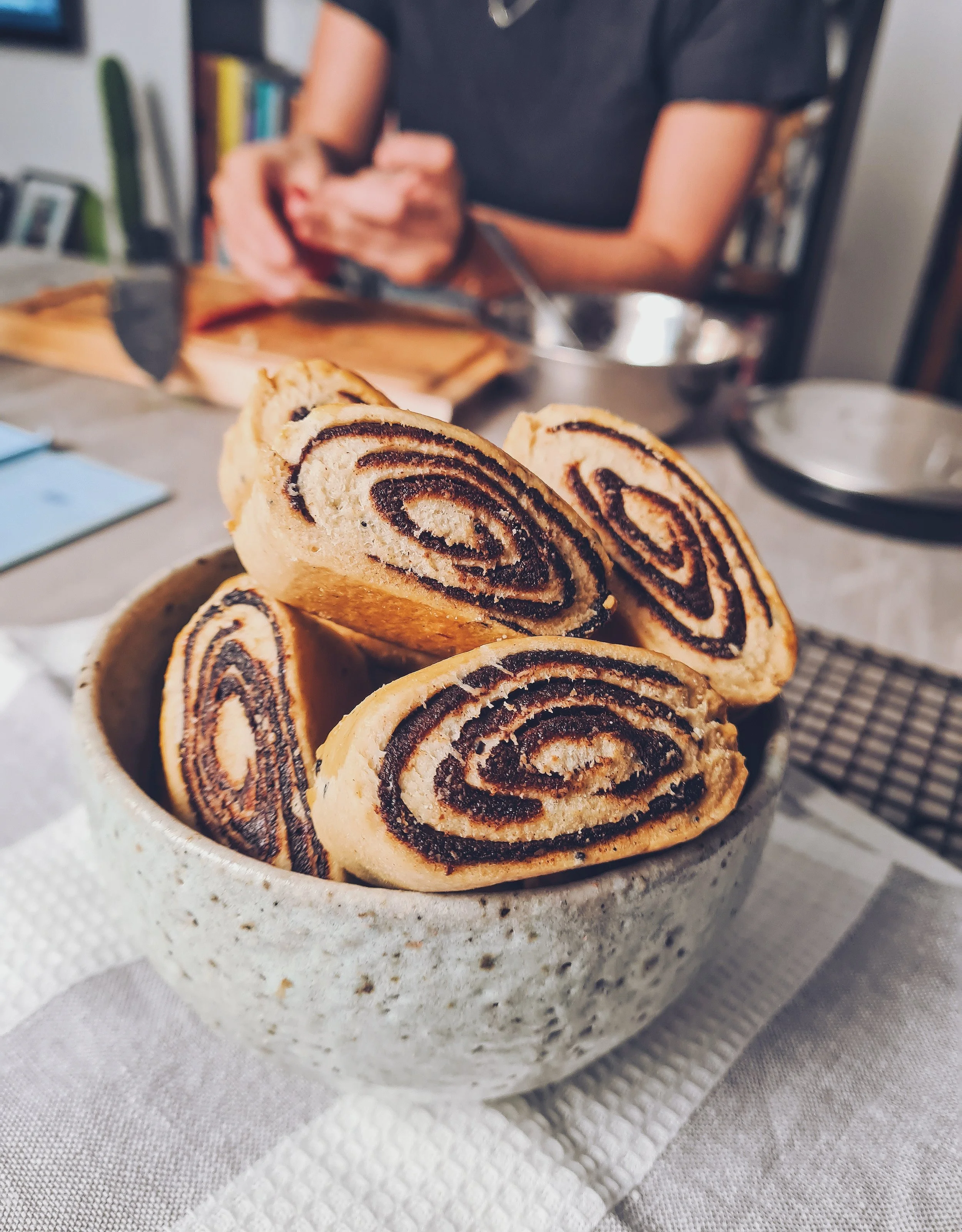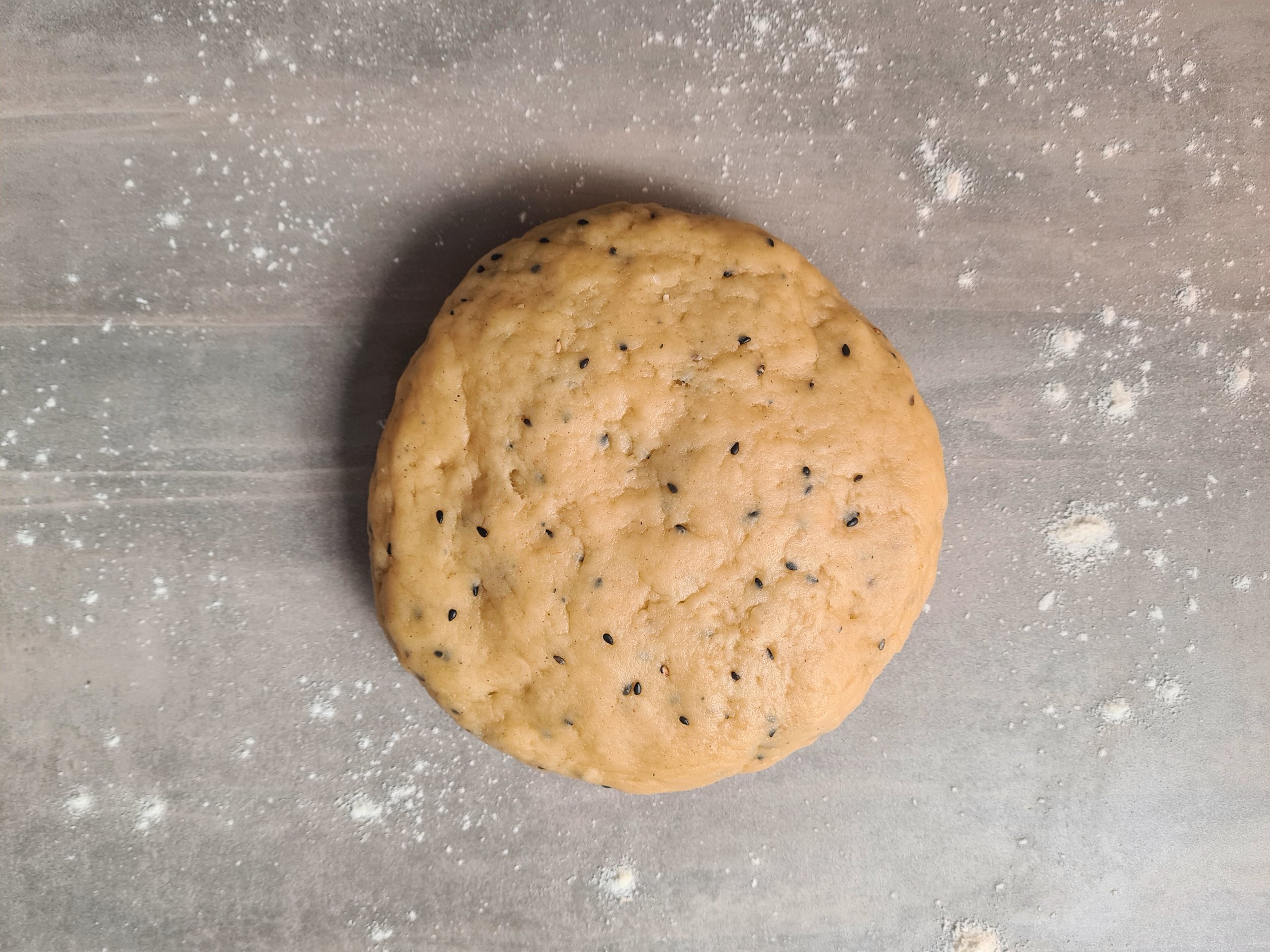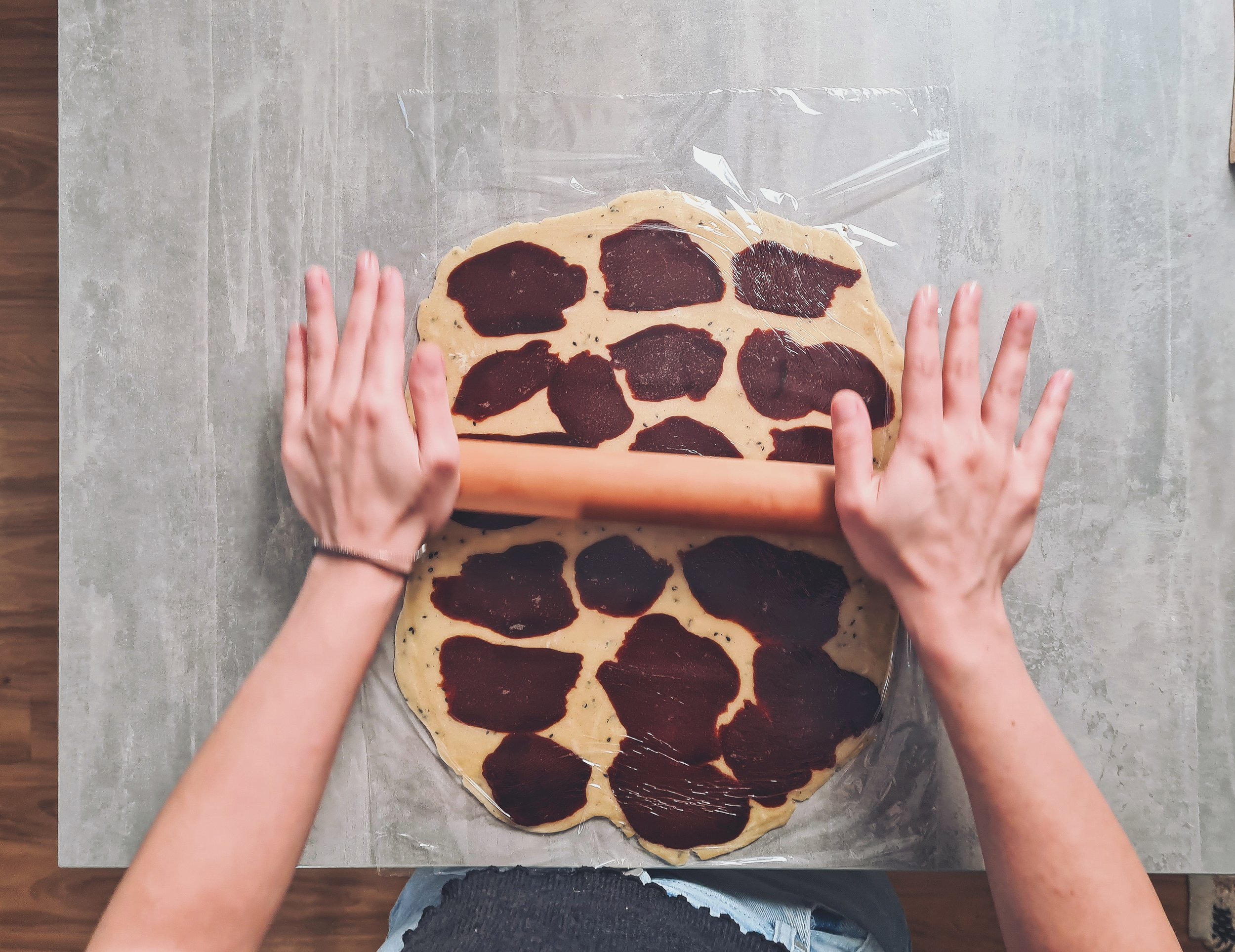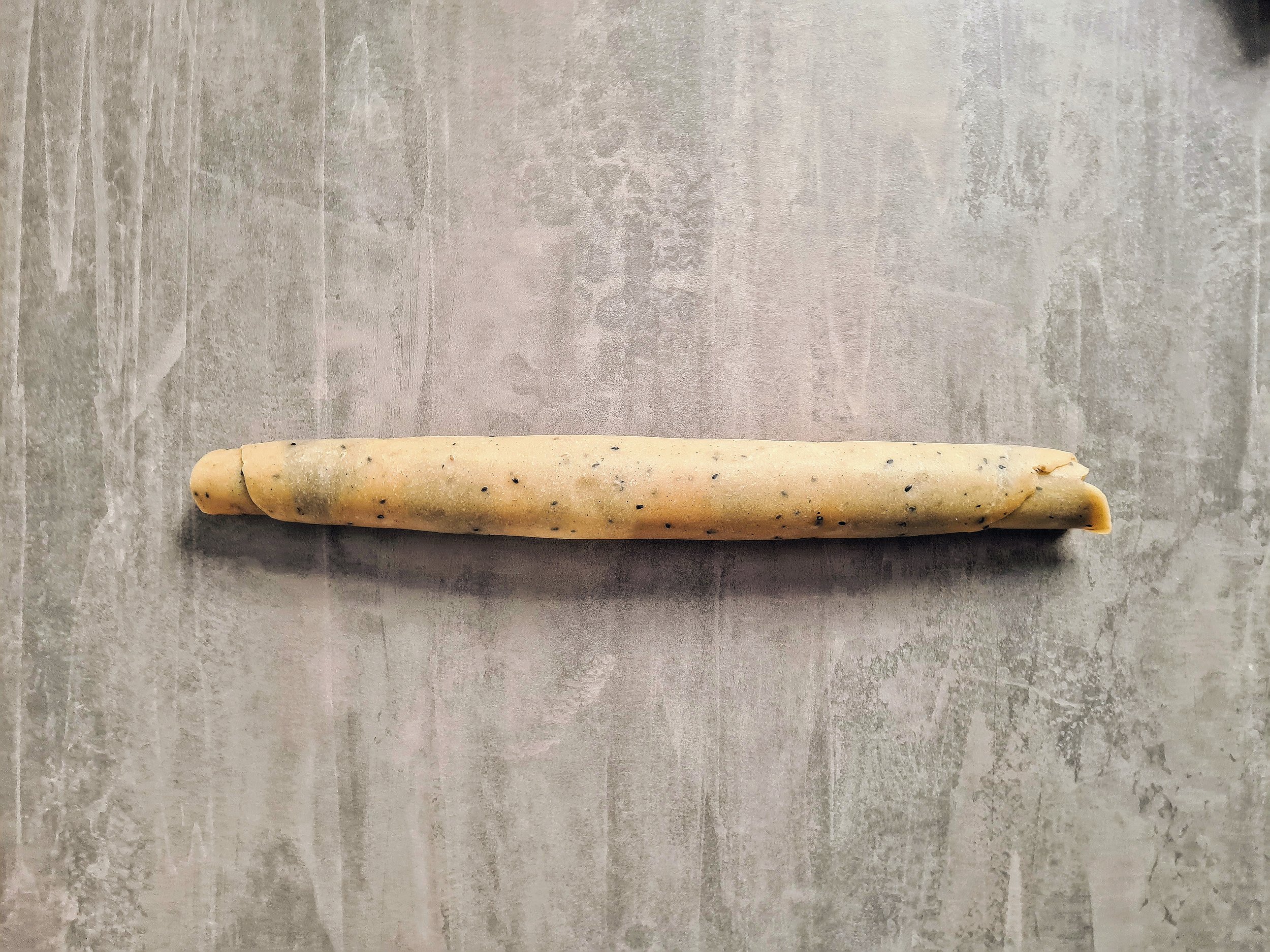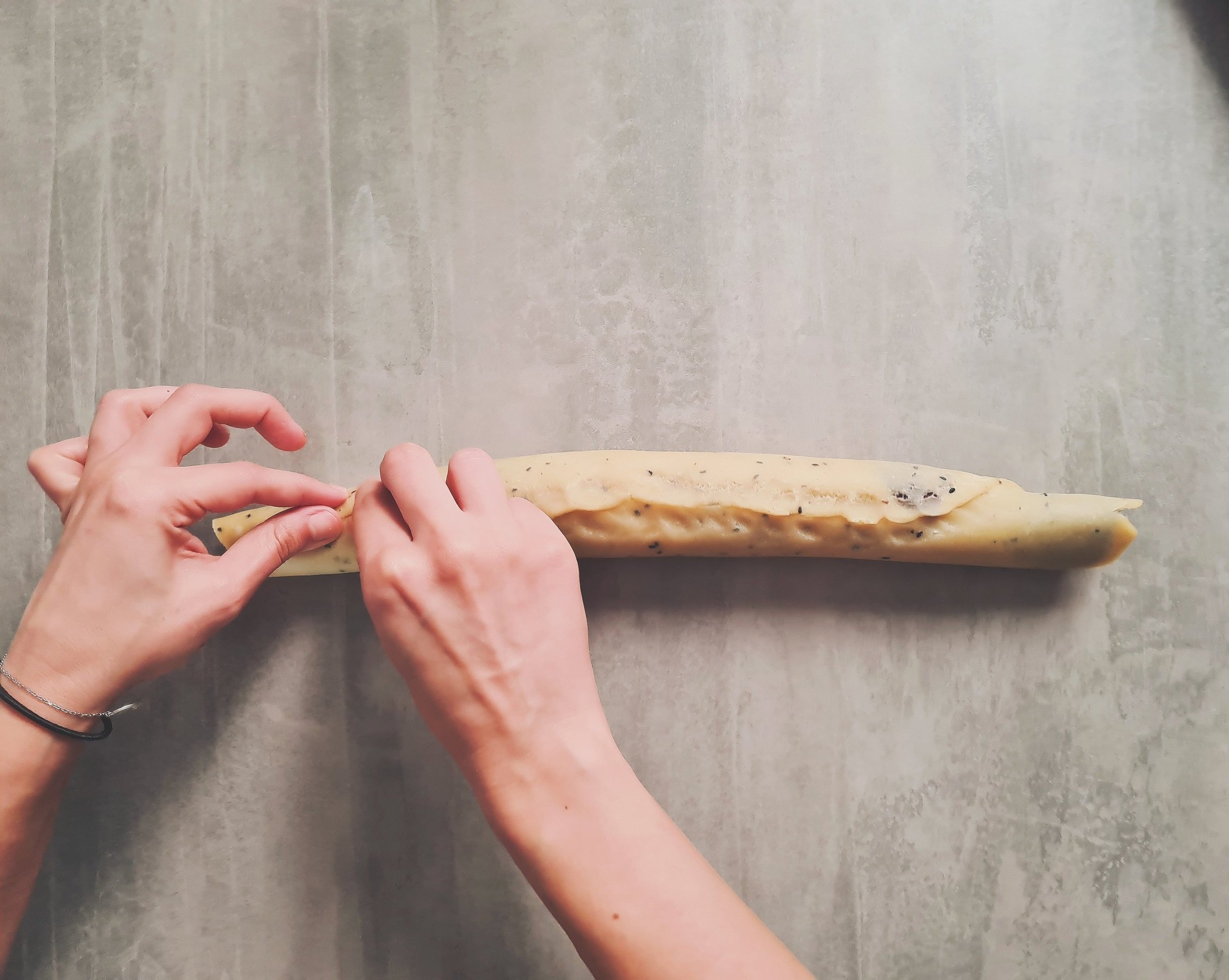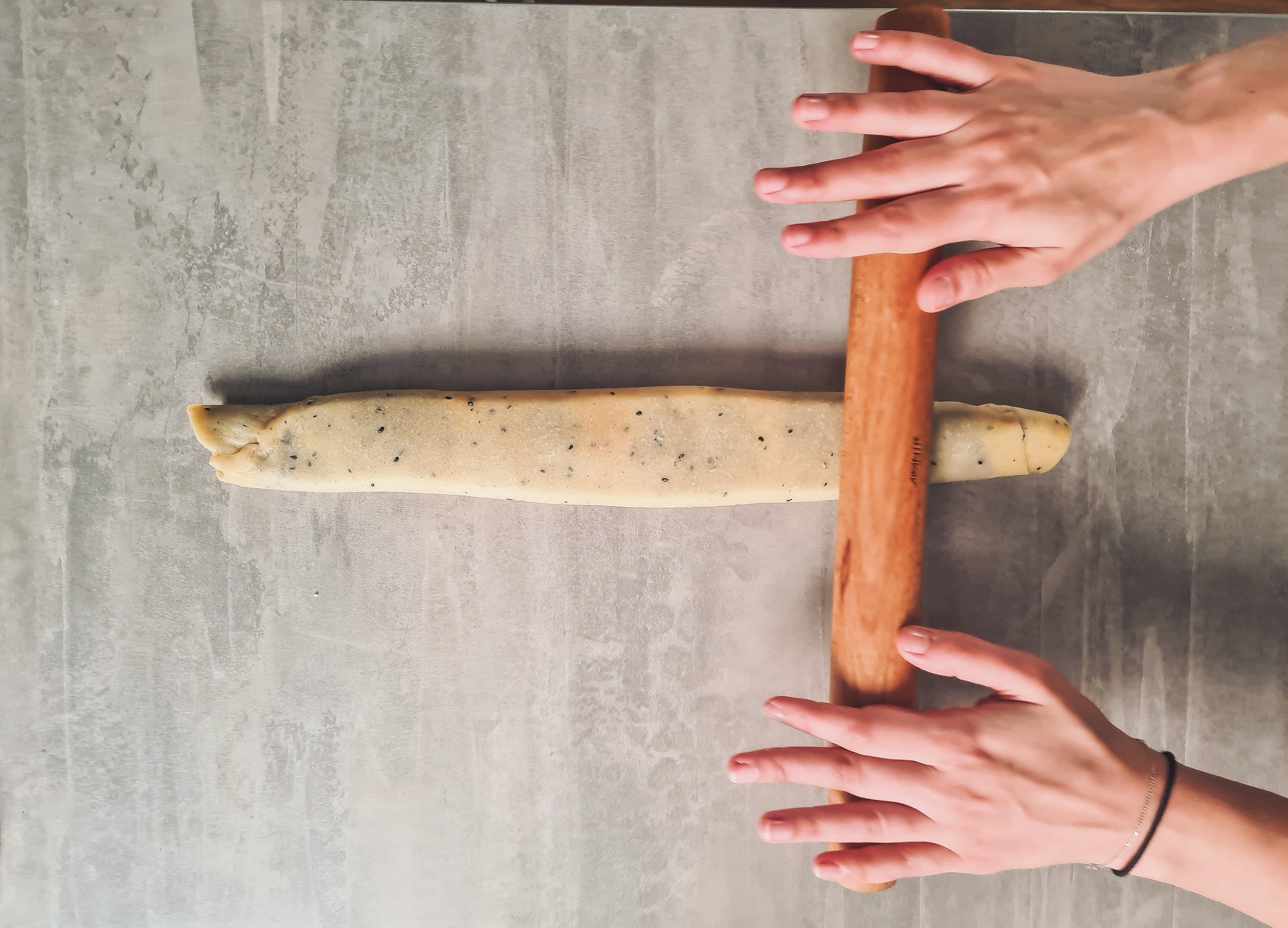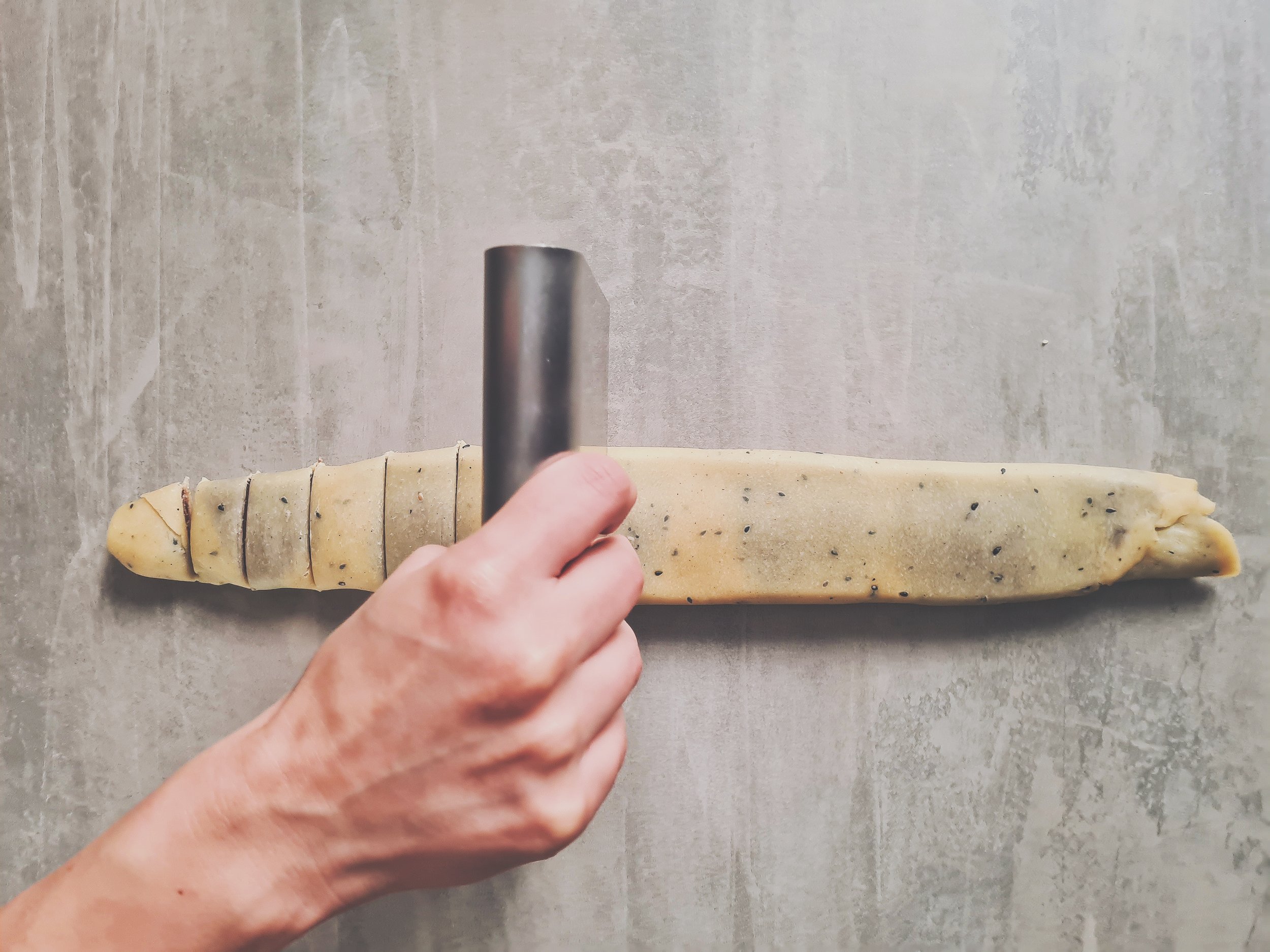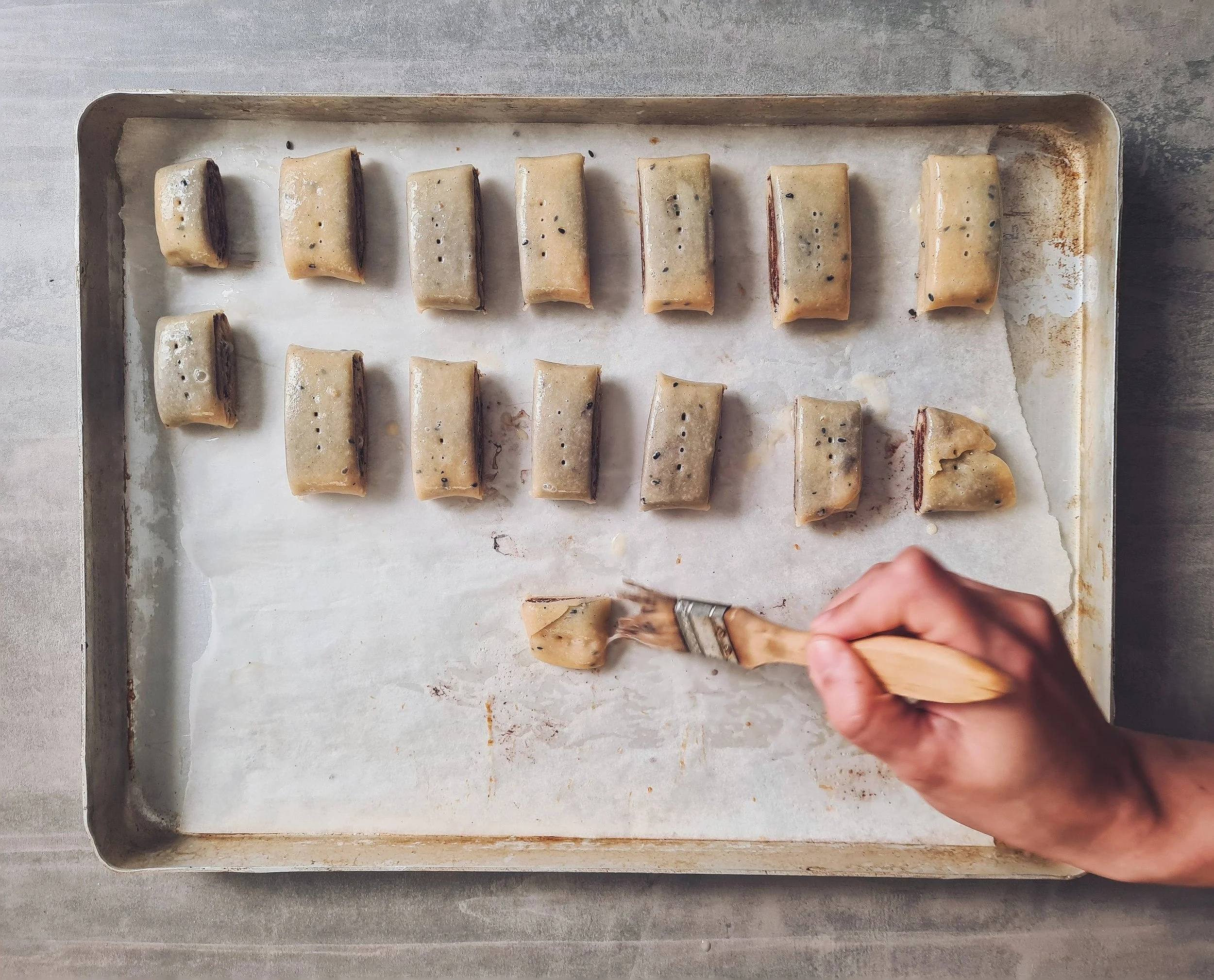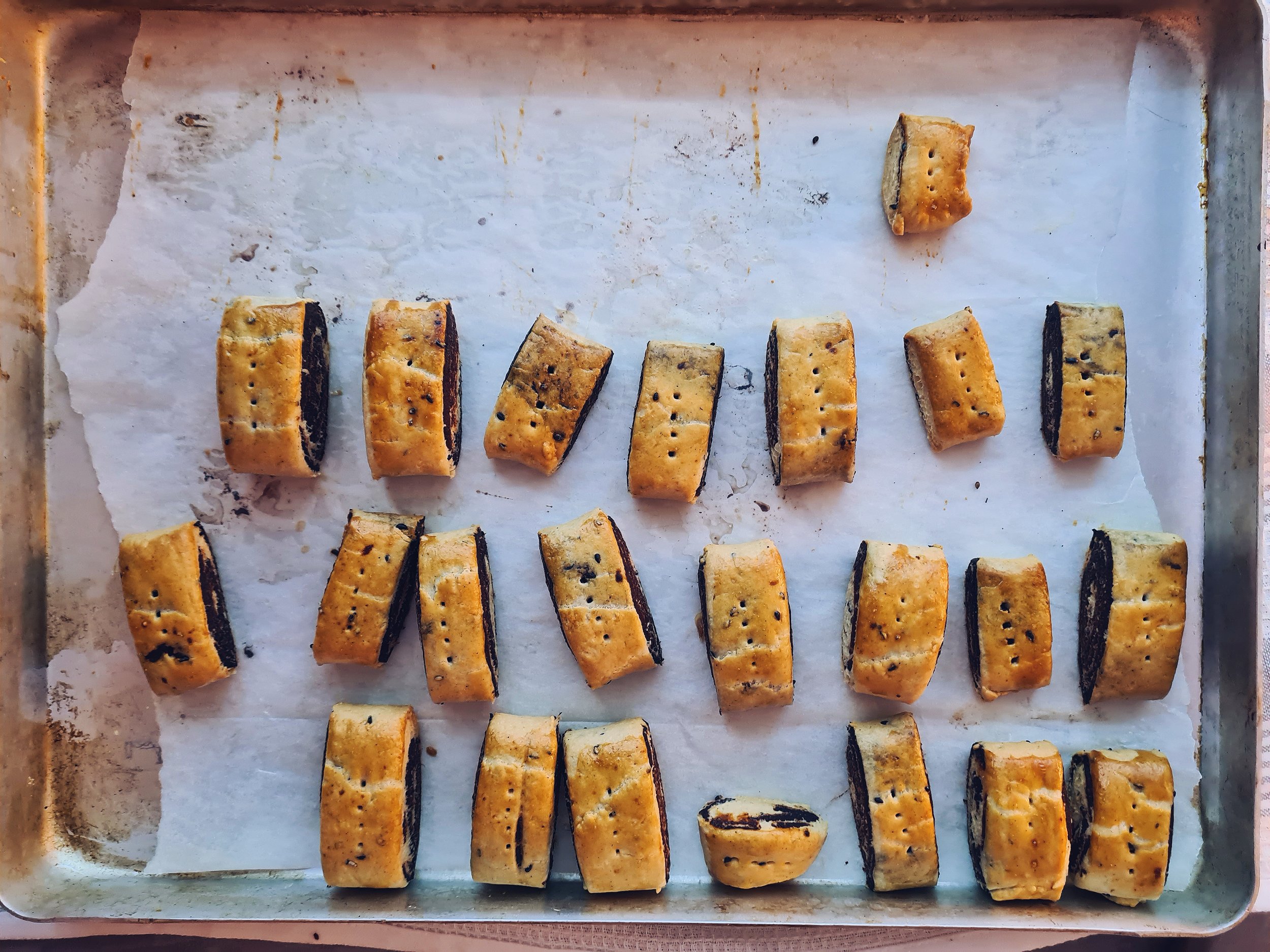Hind Karim’s Kleicha
Image description: A bowl full of kleicha sits on top of a kitchen bench. Photograph by Hind Karim.
Recipe and photographs by Hind Karim.
Some might say that the thought of kleicha being a quietly consistent thread fostering social cohesion and connection to Iraqi culture and identity is a little over-romanticised. Yet when I think of a dish that is quintessentially Iraqi, I think of kleicha – a date-filled dish infused with a poetry that illustrates the rich and complex tapestry of the region. With its existence said to date back to Ancient Sumerian times, this gastronomic heirloom has a near ubiquitous presence in Iraq, cutting across multiple faiths, ethnic groups and districts.
This recipe is adapted from the hostess with the mostess’, a woman who knows how to bring warm, hilarious and buzzingly infectious energy to any room, my mother Huda. She and I both love using ghee for its roasted, nutty and intense flavour, though butter is also totally fine to use as a substitute.
Not only is this biscuit deliciously crumbly and uniquely sweet, it also evokes a well of memories and a whole lot of profound, often hard to express emotions.
Image description: Hind Karim hugs her mother while standing behind her and both smile at the camera. Photograph by Hind Karim.
For the past four to five decades, you could say the Iraqi experience has been complicated. The country has faced one of the largest diasporas in modern times, with the effects of these hardships continuing to be felt by many communities today. The generational effects of having little choice but to lead a life of rootlessness and little to no time to process the residual grief are commonly brushed to the side in order to make room for the energy required to adapt to perpetual change. Despite all of this, one of the few constants it seemed, was a tray of cardamom spiked kleicha on our coffee tables, no matter where our worn-out roots landed.
Having a never-ending supply of them summons both the physical and metaphorical presence of grandmothers, aunts and cousins. When we celebrated the end of Ramadan, there were twice as many baked and shared. When we started losing our own sense of where we came from in order to ‘fit in’, that tray was always sitting there. Reminding us.
Makes roughly 40 pieces.
Method –
Mix together flour, salt, baking powder and spices in a large mixing bowl.
With a food processor, electric beater or paddle attachment, start to combine the vegetable oil and ghee with the flour mixture until fully incorporated and it starts to resemble loose breadcrumbs.
Add the warm water and nigella seeds and continue to mix until a dough forms. You may need to use your hands at this point to bring all the ingredients together so that the dough can take its shape. Continue to knead the dough either manually or with a machine for a couple more minutes.
Shape the dough into a ball, cover in cling wrap and rest at room temperature for 1.5 to 2 hours.
After resting, cut the dough into two equal parts. Roll each serving into a rectangular shape (roughly 40 centimetres in length and 30 centimetres in width).
Cut through the date paste with a knife, taking pieces and gently flattening them before placing them on the dough. The date paste on the dough should look a bit like a leopard spot pattern.
Place cling wrap over the whole rectangle and with a rolling pin, roll the date paste into the dough to flatten it completely, then remove the cling wrap.
Preheat oven to 180°C and begin to roll the dough lengthwise until it resembles a log and pinch the flap into the dough to close it up (pictured below).
Flatten the log slightly with a rolling pin and begin to carefully cut the roll into slices (should make about 20-22 slices per roll, and you should have two rolls by now). Transfer to a baking tray lined with baking paper and pierce each slice with a fork.
Whisk the egg and brush each slice with eggwash.
Place the tray in the oven and cook for approximately 20 minutes, or until the kleicha looks golden brown in colour.
Ingredients –
3 cups plain flour
2 tsp baking powder
A pinch of salt
2 tsp ground cardamom
1 tsp cinnamon
1 ½ tsp nigella seeds
¾ cup melted ghee
¼ cup vegetable oil
⅓ cup warm water
Date paste*
1 egg
Tips –
*Date paste can be found at specialty Middle Eastern stores.

